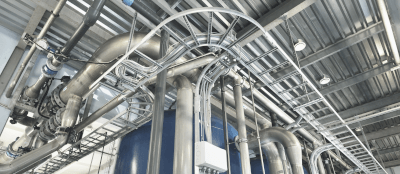What Is Steel Pipe?

Steel pipes, mainly used for transporting fluids, connect equipment through a system known as piping. These pipes are essential in various industries, including thermal and nuclear power plants, petrochemical plants, and in daily life for gas, water, and steam supply.
Uses of Steel Pipe
Steel pipes serve various purposes:
1. Water Piping
Galvanized steel pipes are commonly used for water piping, featuring excellent rust and corrosion prevention due to their hot-dip galvanization.
- Protective Coating Action: A zinc oxide film forms on the surface, providing a barrier against air and water.
- Sacrificial Corrosion Protection: Zinc preferentially corrodes to protect exposed iron, offering electrochemical protection.
2. Piping for High-Temperature, High-Pressure Fluids
Specific steel pipes handle high-temperature and high-pressure fluids, including steam and gases.
3. Piping for Fire Extinguishing Equipment and Industrial Water
Carbon steel pipes are used for lower temperature and pressure fluid transport, with galvanized versions for rust prevention.
Principles of Steel Pipe
1. Dimensions
The schedule number, determined by the fluid’s pressure and the pipe material’s allowable stress, guides the pipe’s wall thickness.
Schedule number (Sch) = (P/S) x 10
P: Design pressure (kg/cm2)
S: Allowable stress (kg/mm2)
2. Manufacturing Method
Steel pipes can be seamless or welded, each manufactured through distinct processes.
Types of Steel Pipe
Steel pipes vary by fluid type and material:
1. Classification by Fluid Type
Differentiated into water pipes and high-temperature/high-pressure pipes based on the fluid’s characteristics.
2. Classification by Material
Materials include carbon steel for general use, alloy steel for strength at high temperatures and pressures, and stainless steel for corrosion resistance.
3. Classification by Application
Specialized steel pipes exist for boilers, heat exchangers, and heating furnaces.
Other Information on Steel Pipe
Standards
Steel pipe standards include JIS, ISO, ASTM, and DIN, each serving different regulatory and quality benchmarks.